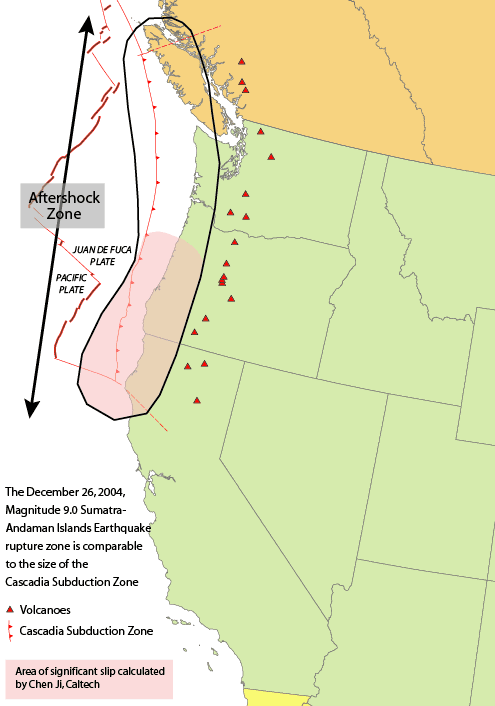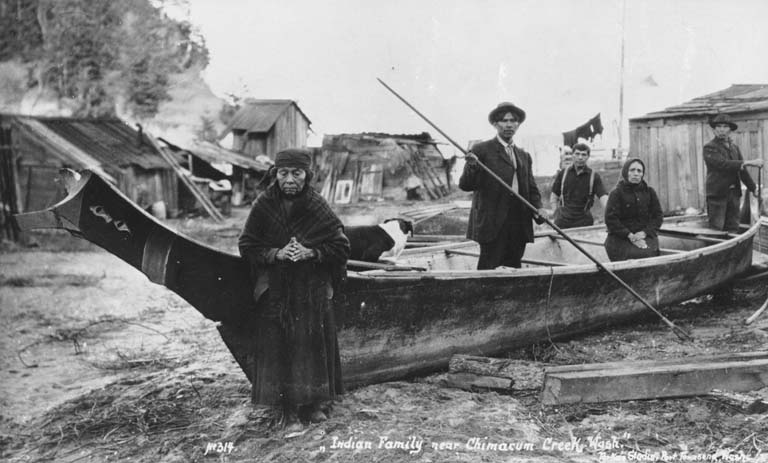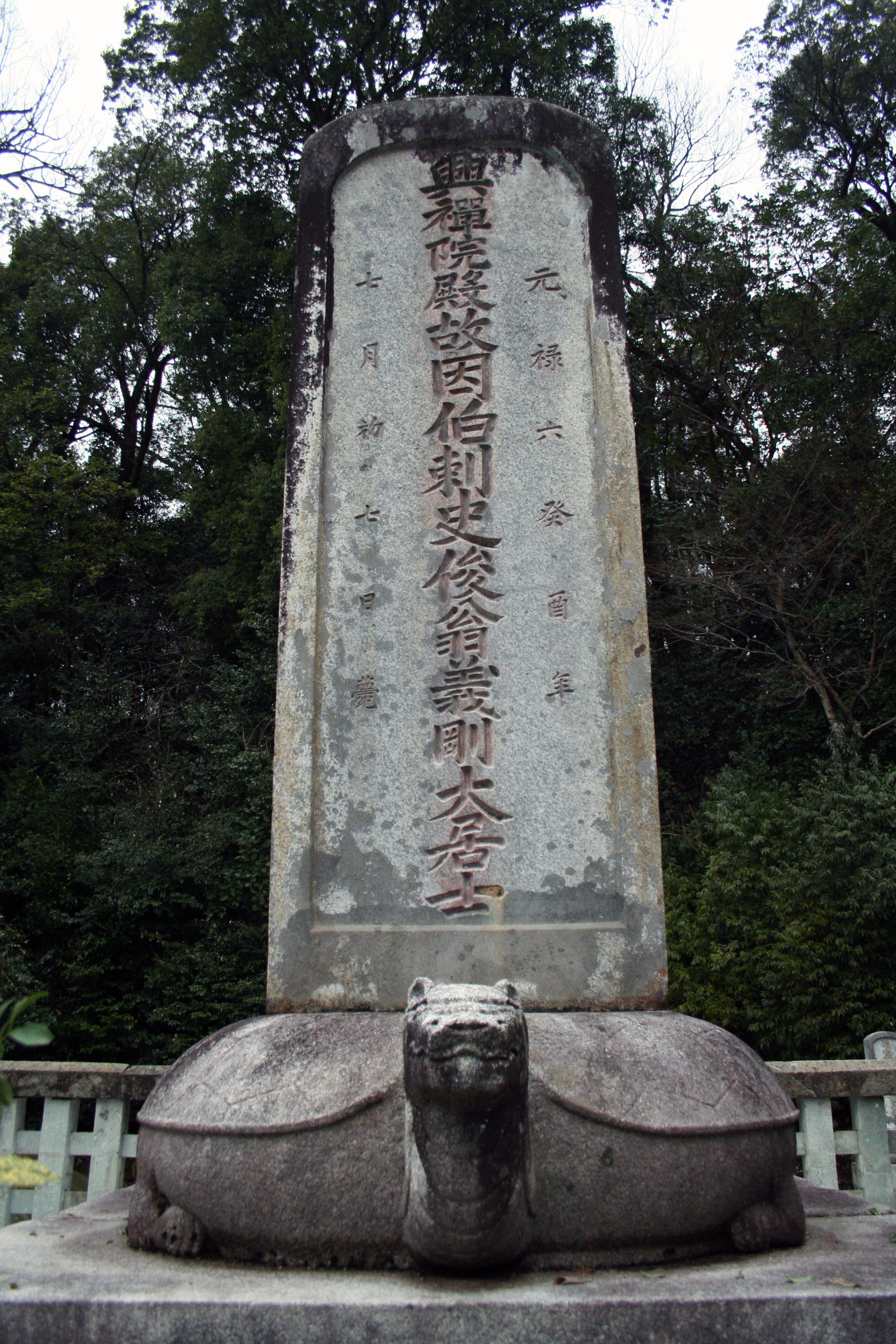|
1700 Cascadia Earthquake
The 1700 Cascadia earthquake occurred along the Cascadia subduction zone on January 26, 1700, with an estimated moment magnitude of 8.7–9.2. The megathrust earthquake involved the Juan de Fuca plate from mid-Vancouver Island, south along the Pacific Northwest coast as far as northern California. The plate slipped an average of along a fault rupture about long. The earthquake caused a tsunami which struck the west coast of North America and the coast of Japan. Japanese tsunami records, along with reconstructions of the wave moving across the ocean, put the earthquake at about 9:00 PM Pacific Time on the evening of 26 January 1700. Japanese records The earthquake took place at about 21:00 PT on January 26, 1700 ( NS). Although there are no written records for the region from the time, the timing of the earthquake has been inferred from Japanese records of a tsunami that does not correlate with any other Pacific Rim quake. The Japanese records exist primarily in the moder ... [...More Info...] [...Related Items...] OR: [Wikipedia] [Google] [Baidu] |
Cascadia Subduction Zone
The Cascadia subduction zone is a convergent plate boundary, about off the Pacific coast of North America, that stretches from northern Vancouver Island in Canada to Northern California in the United States. It is capable of producing 9.0+ magnitude earthquakes and tsunamis that could reach 30 m (100 ft) high. The Oregon Department of Emergency Management estimates shaking would last 5–7 minutes along the coast, with strength and intensity decreasing further from the epicenter. It is a very long, sloping subduction zone where the Explorer, Juan de Fuca, and Gorda plates move to the east and slide below the much larger mostly continental North American plate. The zone varies in width and lies offshore beginning near Cape Mendocino, Northern California, passing through Oregon and Washington, and terminating in Canada at about Vancouver Island in British Columbia. The Explorer, Juan de Fuca, and Gorda plates are some of the remnants of the vast ancient Farallon ... [...More Info...] [...Related Items...] OR: [Wikipedia] [Google] [Baidu] |
Iwate Prefecture
is a Prefectures of Japan, prefecture of Japan located in the Tōhoku region of Honshu. It is the second-largest Japanese prefecture (behind Hokkaido) at , with a population of 1,165,886 (as of July 1, 2023). Iwate Prefecture borders Aomori Prefecture to the north, Akita Prefecture to the west, and Miyagi Prefecture to the south. Morioka is the capital and largest city of Iwate Prefecture; other major cities include Ichinoseki, Iwate, Ichinoseki, Ōshū, Iwate, Ōshū, and Hanamaki, Iwate, Hanamaki. Located on Japan's Pacific Ocean coast, Iwate Prefecture features the easternmost point of Honshu at Cape Todo, and shares the highest peaks of the Ōu Mountains—the longest mountain range in Japan—at the border with Akita Prefecture. Iwate Prefecture is home to famous attractions such as Morioka Castle, the Buddhist temples of Hiraizumi, Iwate, Hiraizumi including Chūson-ji and Mōtsū-ji, the Fujiwara no Sato movie lot and theme park in Ōshū, and the Tenshochi park in Kitaka ... [...More Info...] [...Related Items...] OR: [Wikipedia] [Google] [Baidu] |
Oregon Public Broadcasting
Oregon Public Broadcasting (OPB) is the primary public broadcasting, public media organization for the U.S. state of Oregon as well as southern Washington (state), Washington. It provides news, information, and programming via television stations, dozens of VHF or UHF broadcast relay station#Broadcast translators, translators, on more than 20 List of radio stations in Oregon, radio stations, and via opb.org and other digital platforms. TV broadcasts include local and regional programming as well as programs from the Public Broadcasting Service (PBS) and American Public Television (APT), and radio programs from National Public Radio (NPR), American Public Media (APM), Public Radio Exchange (PRX), and the BBC World Service, among other distributors. Its headquarters and television studios are located in Portland, Oregon. The part of southwestern Oregon not served by OPB is served by KLCC (FM), KLCC radio, Jefferson Public Radio, and Southern Oregon PBS. History 20th century OPB ... [...More Info...] [...Related Items...] OR: [Wikipedia] [Google] [Baidu] |
Copalis River
The Copalis River is a stream on the Olympic Peninsula in the U.S. state of Washington. It originates in the foothills on the southwest side of the Olympic Mountains and empties into the Pacific Ocean.USGS topographic maps accessed via https://mapper.acme.com The name "Copalis" comes from the Quinault language term /k'ʷpíls/. The Copalises are a Native American group. Both the Chehalis people and Quinault Indian Nation claim the Copalis are a subdivision of their tribe. Course The Copalis River originates in the southwestern portion of the Olympic Peninsula a few miles south of the Quinault Reservation and just north of the Humptulips River. It flows southwest for about to the Pacific Ocean, emptying into the ocean at Copalis Beach in Griffiths-Priday State Park. At its mouth, the river is bordered by the Copalis spit, a small peninsula that serves as refuge for migratory birds. The bank of the Copalis is the site of a ghost forest. See also * List of rivers of Washington ( ... [...More Info...] [...Related Items...] OR: [Wikipedia] [Google] [Baidu] |
The New Yorker
''The New Yorker'' is an American magazine featuring journalism, commentary, criticism, essays, fiction, satire, cartoons, and poetry. It was founded on February 21, 1925, by Harold Ross and his wife Jane Grant, a reporter for ''The New York Times''. Together with entrepreneur Raoul H. Fleischmann, they established the F-R Publishing Company and set up the magazine's first office in Manhattan. Ross remained the editor until his death in 1951, shaping the magazine's editorial tone and standards. ''The New Yorker''s fact-checking operation is widely recognized among journalists as one of its strengths. Although its reviews and events listings often focused on the Culture of New York City, cultural life of New York City, ''The New Yorker'' gained a reputation for publishing serious essays, long-form journalism, well-regarded fiction, and humor for a national and international audience, including work by writers such as Truman Capote, Vladimir Nabokov, and Alice Munro. In the late ... [...More Info...] [...Related Items...] OR: [Wikipedia] [Google] [Baidu] |
Washington (state)
Washington, officially the State of Washington, is a U.S. state, state in the Pacific Northwest region of the United States. It is often referred to as Washington State to distinguish it from Washington, D.C., the national capital, both named after George Washington (the first President of the United States, U.S. president). Washington borders the Pacific Ocean to the west, Oregon to the south, Idaho to the east, and shares Canada–United States border, an international border with the Provinces and territories of Canada, Canadian province of British Columbia to the north. Olympia, Washington, Olympia is the List of capitals in the United States, state capital, and the most populous city is Seattle. Washington is the List of U.S. states and territories by area, 18th-largest state, with an area of , and the List of U.S. states and territories by population, 13th-most populous state, with a population of just less than 8 million. The majority of Washington's residents live ... [...More Info...] [...Related Items...] OR: [Wikipedia] [Google] [Baidu] |
Oregon
Oregon ( , ) is a U.S. state, state in the Pacific Northwest region of the United States. It is a part of the Western U.S., with the Columbia River delineating much of Oregon's northern boundary with Washington (state), Washington, while the Snake River delineates much of its eastern boundary with Idaho. The 42nd parallel north, 42° north parallel delineates the southern boundary with California and Nevada. The western boundary is formed by the Pacific Ocean. Oregon has been home to many Indigenous peoples of the Americas, indigenous nations for thousands of years. The first European traders, explorers, and settlers began exploring what is now Oregon's Pacific coast in the early to mid-16th century. As early as 1564, the Spanish expeditions to the Pacific Northwest, Spanish began sending vessels northeast from the Philippines, riding the Kuroshio Current in a sweeping circular route across the northern part of the Pacific. In 1592, Juan de Fuca undertook detailed mapping a ... [...More Info...] [...Related Items...] OR: [Wikipedia] [Google] [Baidu] |
Thuja Plicata
''Thuja plicata'' is a large evergreen coniferous tree in the family Cupressaceae, native to the Pacific Northwest of North America. Its common name is western redcedar in the U.S. or western red cedar in the UK, and it is also called pacific red cedar, giant arborvitae, western arborvitae, just cedar, giant cedar, or shinglewood. It is not a true cedar of the genus ''Cedrus''. ''T. plicata'' is the largest species in the genus ''Thuja'', growing up to tall and in diameter. It mostly grows in areas that experience a mild climate with plentiful rainfall, although it is sometimes present in drier areas on sites where water is available year-round, such as wet valley bottoms and mountain streamsides. The species is shade-tolerant and able to establish in forest understories and is thus considered a climax species. It is a very long-lived tree, with some specimens reaching ages of well over 1,000 years. Indigenous peoples of the Pacific Northwest use the wood of this species for ma ... [...More Info...] [...Related Items...] OR: [Wikipedia] [Google] [Baidu] |
Ghost Forest
Ghost forests are areas of dead trees in former forests, typically in coastal regions where Sea level rise, rising sea levels or tectonic shifts have altered the height of a land mass. Forests located near the coast or estuary, estuaries may also be at risk of dying through saltwater poisoning, if invading seawater reduces the amount of freshwater that deciduous trees receive for sustenance. Phantom forest, Phantom forests refer to a different issue with forests. Formations Sea level changes When there is a change in sea level, coastal regions may become inundated with sea water. This can alter coastal areas and kill large areas of trees, leaving behind what is called a “ghost forest.” This type of ghost forest may develop in a variety of environments and in many different places. In the Southern United States, southern US, coastal marshes are expanding into dry wooded areas, killing trees and leaving behind areas of dead trees called snags. Regions of the US at or below se ... [...More Info...] [...Related Items...] OR: [Wikipedia] [Google] [Baidu] |
Dendrochronology
Dendrochronology (or tree-ring dating) is the scientific method of chronological dating, dating tree rings (also called growth rings) to the exact year they were formed in a tree. As well as dating them, this can give data for dendroclimatology, the study of climate and atmospheric conditions during different periods in history from the wood of old trees. Dendrochronology derives from the Ancient Greek (), meaning "tree", (), meaning "time", and (), "the study of". Dendrochronology is useful for determining the precise age of samples, especially those that are too recent for radiocarbon dating, which always produces a range rather than an exact date. However, for a precise date of the death of the tree a full sample to the edge is needed, which most trimmed timber will not provide. It also gives data on the timing of events and rates of change in the environment (most prominently climate) and also in wood found in archaeology or works of art and architecture, such as old pane ... [...More Info...] [...Related Items...] OR: [Wikipedia] [Google] [Baidu] |
Tanabe, Wakayama
Tanabe (, Latn, ja, Tanabe-shi, ) is a Cities of Japan, city located in Wakayama Prefecture, Japan. , the city had an estimated population of 70,972 in 35,076 households and a population density of 69 persons per km2. The total area of the city is . Tanabe is the second most populous city in Wakayama, and the largest in the Kansai region of Japan in terms of area. Geography Tanabe is located the south-central Kii Peninsula and faces to the Pacific Ocean to the west and the Kii Mountains to the north and east. The coastline is intricate and forms Tanabe Bay. Tenjinzaki is at the northern end of the bay, and Shirahama is on the south side. The climate is moderated by the effects of the Kuroshio Current offshore. Climate Tanabe has a humid subtropical climate (Köppen ''Cfa'') characterized by warm summers and cool winters with light to no snowfall. The average annual temperature in Tanabe is 16.6 °C. The average annual rainfall is 2348 mm with September as the wettest m ... [...More Info...] [...Related Items...] OR: [Wikipedia] [Google] [Baidu] |
Genroku
was a after Jōkyō and before Hōei. The Genroku period spanned the years from September 1688 to March 1704. The reigning emperor was .Titsingh, Isaac. (1834). ''Annales des empereurs du japon'', p. 415. The period was known for its peace and prosperity, as the previous hundred years of peace and seclusion in Japan had created relative economic stability. The arts and architecture flourished. There were unanticipated consequences when the shogunate debased the quality of coins as a strategy for financing the appearance of continuing Genroku affluence. This strategic miscalculation caused abrupt inflation. Then, in an effort to solve the ensuing crisis, the introduced what were called the Kyōhō Reforms. Change of era The was 1688. The new era name was created to mark the beginning of the reign of Emperor Higashiyama of Japan, Higashiyama. The previous era ended and the new one commenced in Jōkyō 5, on the 30th day of the 9th month. A sense of optimism is suggested in the ... [...More Info...] [...Related Items...] OR: [Wikipedia] [Google] [Baidu] |









